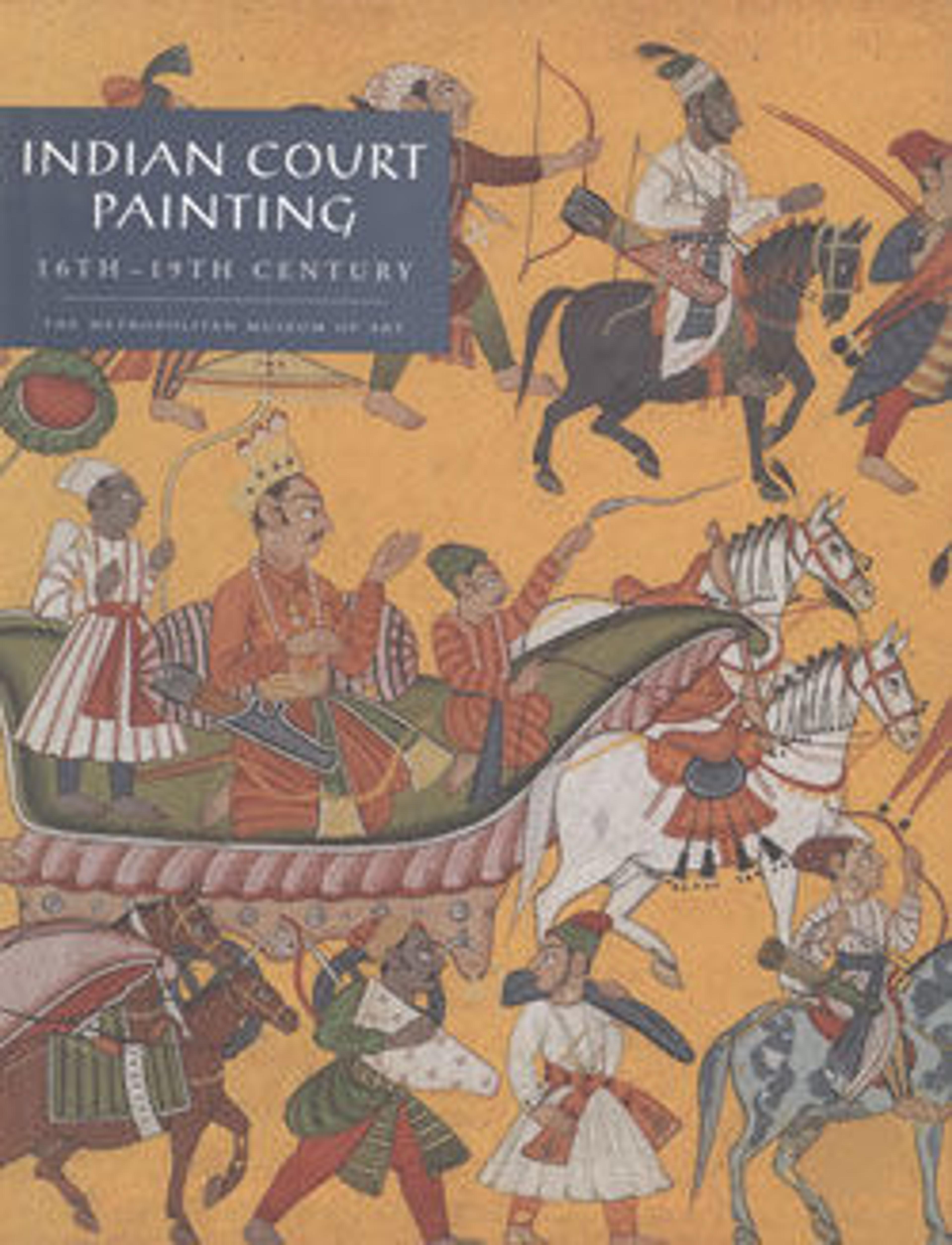"Krishna and Balarma Fighting the Enemy", Folio from a Harivamsa (The Legend of Hari (Krishna))
A flurry of warriors clash in this epic scene from the Persian translation of the Hindu classic, the Harivamsa. Krishna, on the left, stands in a chariot and is about to release an arrow. His arrow is intended for a soldier in black and gold armour who stands in a chariot, wielding a shield and sword. Krishna is dressed in yellow garments, a body shield, and sports a crown. Below him, and closer to the left corner, is Balarama, who is fighting using his plow and pestle. He is dressed in blue, and wears a crown. The combat scene is a melee of clashing swords, flying banners, and strewn bodies. The dynamic action of the battle scene is typical of the Akbar period, while the style of the rocks still shows dependence on Persian painting.
Artwork Details
- Title: "Krishna and Balarma Fighting the Enemy", Folio from a Harivamsa (The Legend of Hari (Krishna))
- Date: ca. 1590–95
- Geography: Attributed to present-day Pakistan, probably Lahore
- Medium: Ink, opaque watercolor, and gold on paper
- Dimensions: Image: H. 12 in. (30.5 cm)
W. 7 3/4 in. (19.7 cm)
Page: H. 13 3/4 in. (34.9 cm)
W. 9 1/8 in. (23.2 cm)
Mat: H. 19 1/4 in. (48.9 cm)
W. 14 1/4 in. (36.2 cm) - Classification: Codices
- Credit Line: Purchase, Edward C. Moore Jr. Gift, 1928
- Object Number: 28.63.3
- Curatorial Department: Islamic Art
More Artwork
Research Resources
The Met provides unparalleled resources for research and welcomes an international community of students and scholars. The Met's Open Access API is where creators and researchers can connect to the The Met collection. Open Access data and public domain images are available for unrestricted commercial and noncommercial use without permission or fee.
To request images under copyright and other restrictions, please use this Image Request form.
Feedback
We continue to research and examine historical and cultural context for objects in The Met collection. If you have comments or questions about this object record, please complete and submit this form. The Museum looks forward to receiving your comments.
